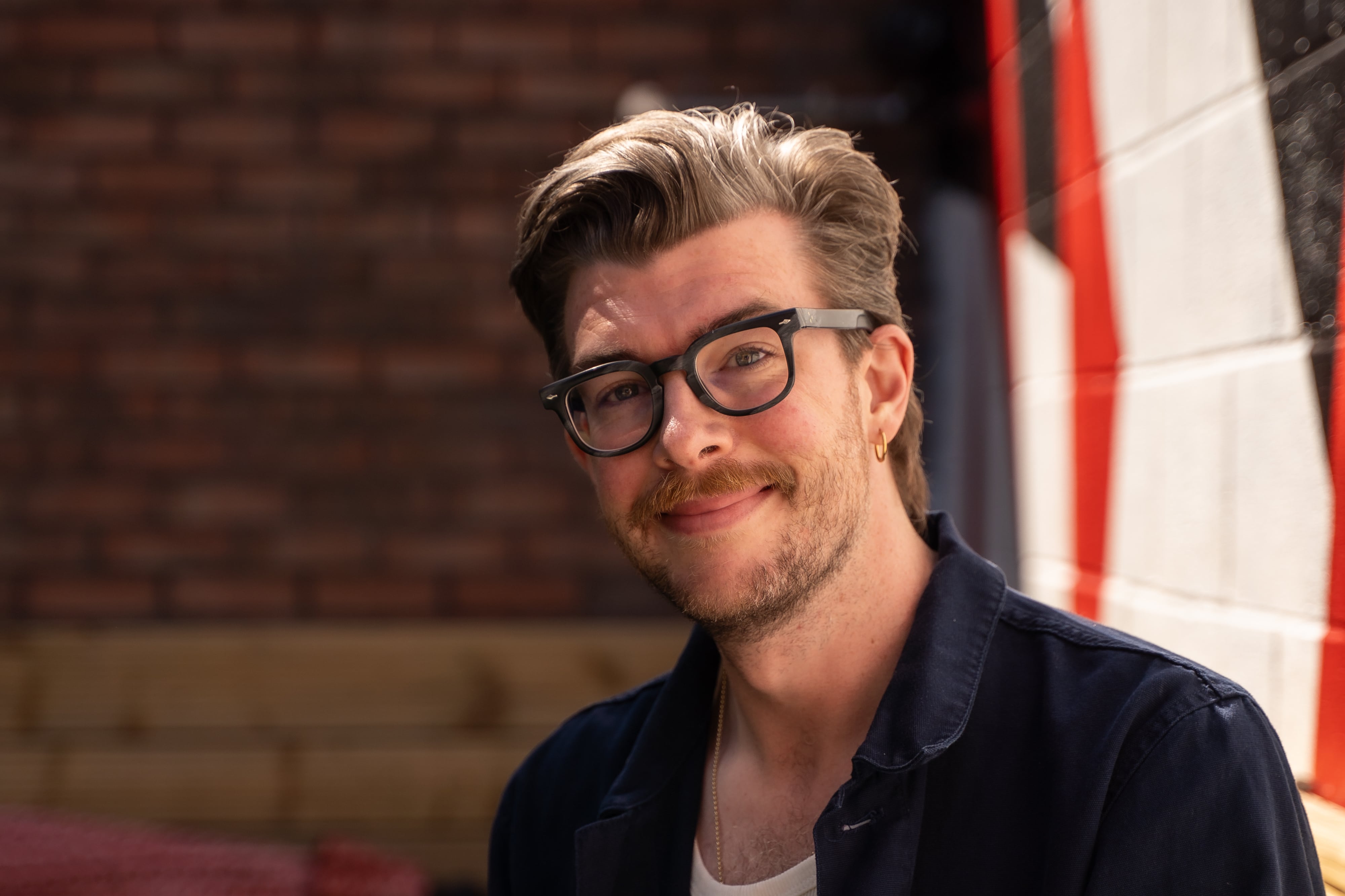I meet Esther Freud in a north London cafe in advance of the publication of her 10th novel, My Sister and Other Lovers. It’s 30 degrees outside so we order orange juice, and sit under a slow ceiling fan.
The atmosphere in the cafe is charmingly chaotic: bright yellow walls, books and plants overspilling the shelves, the sound of chatter and cutlery clinking layered with Classic FM and the occasional burst of a passing car radio. Freud speaks with quiet assurance and pauses to consider her answers. Her demeanour is warm and curious.
My Sister and Other Lovers marks a return to the highly autobiographical terrain Freud first mined in Hideous Kinky (1992), her breakout debut about a girl’s unconventional childhood in Morocco with her sister and their bohemian mother. The father, an artist in London, is notable mainly for his absence.
The author is the daughter of the artist Lucian Freud and Bernardine Coverley. Her sister is the fashion designer Bella Freud.
READ MORE
More than three decades later, she revisits this material from a different angle, looking at a different chapter in their lives. It is also a return to Ireland, where her mother was from and where Freud continues to draw from the painful, rich well of familial and national history. Her 2021 novel, I Couldn’t Love You More, tackled the trauma of Ireland’s mother and baby homes.
This time around, though, the book emerged uncertainly. Freud describes a period of drifting after her last novel, coinciding with the start of the Covid pandemic. She turned to short stories, feeling they required less commitment. “Almost before realising it,” she says, “I had a book of short stories, and I wasn’t that excited. I just felt quite pleased with myself in a slightly childish way, like, oh, that was easy.”
That ease, she admits now, was a sign. “Books do need to be quite hard to be good. Books have to be so good to touch you.” When she looked at the collection more closely, what stood out were the sisters: their communication, their lives, their deep connection. The stories were all titled after songs or albums – the first, called Desire, after the Bob Dylan album, was meant to be the title story. But something didn’t feel right. The book wasn’t about desire, not really. It was about love. It was about the sisters.
And so, the title changed: My Sister and Other Lovers. At that moment, Freud realised she would need to begin again. Two more years passed as she reworked the short stories into a novel with a clear narrative arc. It was becoming a sequel of sorts to Hideous Kinky. At first, she resisted this idea, changing the characters’ names, pushing them away. But eventually, she gave in. “I used my own life and filled out the stories,” she says, “and formed them into more of a narrative arc.”
Freud has always been open about drawing from her own experiences, though she is rarely included in discussions around autofiction, a label often applied to contemporary women writers. “I suppose because I always want to create a more traditional novel,” she reflects. But she is always up front about drawing from life. “Maybe I out myself more readily than another writer might.”

Memoir and autofiction, she notes, come with a particular intensity. She has a great deal of respect for a lot of recent books that confuse the distinction between fact and fiction, but she isn’t drawn to experimentalism in her own writing. “Often those books can be quite academic. I’m not really so interested in that. What I’m interested in is story.”
Still, she admits she worries about writing from life. “Anything recognisable, I worry that someone will be offended,” she says. “But the alternative is not writing something that will work in the book.” At a certain point in the process, a cold determination takes over: “that famous splinter of ice in the heart”. The story becomes everything. Nothing else matters. “It’s terrible not to be able to write what you want to write.”
Childhood remains one of her richest themes. Writing from the perspective of a child comes more naturally, she says. “There’s an ease to it. I love describing things seen for the first time.” Writing from the point of view of an adult woman, she finds more difficult.
Perhaps it’s related to another of Freud’s themes: freedom. I’ve noticed that many of her characters seek to free themselves from familial or social constraints, and become trapped in other ways.
She had never quite framed it that way herself, she says, but the observation resonates. “I like to write about people who go on journeys to try to find a life that suits them better. I’m always dreaming of escaping. I love moving. My parents both lived life as they wanted to, and I think they understood that I had every right to do the same.”
Freud moved often as a child, and Hideous Kinky was, in part, a testament to that instability and its unexpected gifts. When it was published in 1992, she recalls, many readers, particularly single mothers, expressed gratitude. Here, at last, was a child’s perspective on a mother who didn’t have many resources but still managed to prioritise adventure.
“There’s so much criticism of those women who thought to do something differently,” she says. “I thought the book was non-judgmental, but people didn’t see it that way. I think if I wrote it now, as a mother, I’d be more careful. But when I wrote it I wrote it as if I was a child. That’s what made the book work.”
Male critics at the time were particularly ungenerous. “They described the plot as this feckless hippie mother dragging her kids around. Well, she wasn’t dragging us. Things then were really hard. There was no support. But she saved herself. And she gave me an enormous amount of inspiration.”
With My Sister and Other Lovers, she returns to her family story from a more nuanced perspective. The novel investigates the undercurrents of sisterhood, the tensions that pull at relationships beneath the surface.
“I wanted to write about sisters and the complicated relationship sisters have with each other,” she explains. “The tug of war that happens underneath every family story. Times when someone has a very different worldview and they want you to agree with theirs. You’re trying to convince each other of the validity of the way you see things.”
It’s not nostalgia, exactly, though she admits to a remarkable memory for the small details of the past. “Not for anything that useful,” she laughs. She can remember whole conversations.
“I spent quite a lot of time making life into stories when I was young, which probably helps keep memories alive. I think some people are less interested in that; in being reverent about what happened, turning it into a story. Maybe they live more in the present.”
Writing, for her, involves bravery and curiosity. She believes a subject is worth pursuing only if it contains something mysterious. “Often when I write I don’t know how it’s going to unravel,” she says.
“I really didn’t know how the sisters’ journey would go, I only knew a few stepping stones. A few scenes I really wanted to write. But I was saving them, as a reward for getting there. To be a good subject, you have to be really interested in it and you have to not know everything. I always want to be brave enough to go down into a subject that’s close to me, to give myself permission to focus for however many months or even years on the thing that’s interesting to me.”
In this book, that mystery was the heart of the relationship between the sisters. To write it compellingly, she had to draw on her own deep and complex bond with her own sister.
Has her sister read the book? “Yes, she’s one of my earliest readers. She’s a very good reader. A very, very good editor. She has no time for superfluous or soft descriptions. She always wants me to be harder, be meaner, be tougher. To cut through. With each book, there’s someone sitting on your shoulder, and with this one it was definitely her.”
















